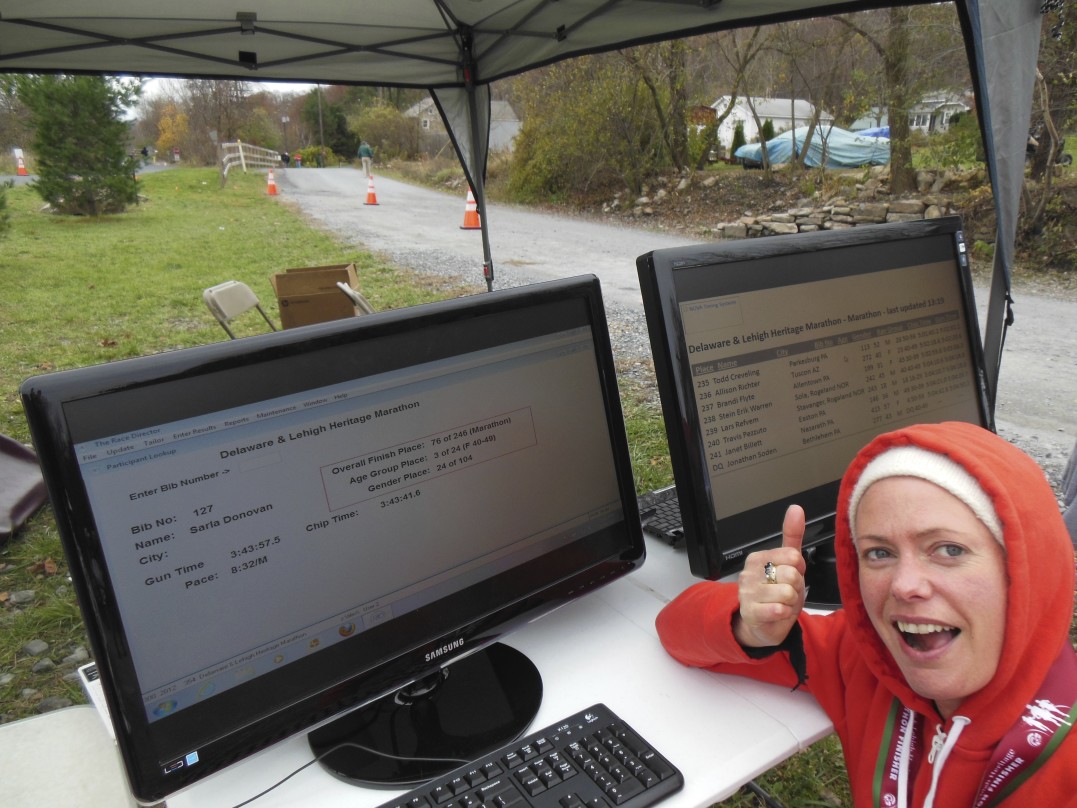DELAWARE AND LEHIGH
We had tickets to a Knicks game at Madison Square Garden that night but our hearts weren’t in it. Months of planning and training; when would we ever be this fit again!
After the game, we went online and tried to find an alternative. There was one on Sunday, two hours away in Pennsylvania: the Delaware and Lehigh Heritage Marathon.
We emailed the organiser Renee at 10.30 pm and she emailed back to say sorry, sold out.
We tracked down her home number and called her. She was adamant. There was no way we could get in, she’d been inundated with entries the moment Mayor Bloomberg announced New York was cancelled.
Next morning we phoned the Northhampton Recreation Centre, where people were going to pick up race packs. It was a long shot, but we hoped someone might have cancelled. The guy who answered said, "Sorry, you want the other side of the building".
We mentioned we’d come a long way, from New Zealand. He said, "Hey wait a minute, I think that’s the organiser there."
We heard him chatting to Renee on our behalf. She came to the phone and we asked if there was any chance we could run. Straight away she said she could get us in. Whatever that guy had done, it worked!
We caught a bus to Bethlehem, the nearest town to our replacement marathon, where we’d managed to book the last room at the inn, the Holiday Inn that is. We passed through Allenton, one of the main towns in eastern Pennsylvania and the world’s second-biggest steel producer in its day. Made famous by the Billy Joel song, it was now dominated by old abandoned steel mills. This was about as far from the five boroughs as you could get.
We scoffed a pre-run meal of pasta and waffles. Next morning it was close to zero, crisp but sunny. There were 200-300 runners and the organisers and volunteers were all so welcoming.
The route followed a trail along the former Lehigh Valley railroad, noisy supporters lifting our spirits as we ran. We both finished and were surprised at our times and that we could still walk afterwards. I ran 3.43.41 while Simon’s sprint finish saw him cross the line in 3.58.01.
Renee insisted on a photo for the local paper featuring us with local mascot Smokey the Bear as we were officially the runners who’d come from furthest away.
A fellow New York marathoner from Washington drove us back to the Holiday Inn where we hot-tubbed for hours, then ate and drank like maniacs at the main employer in Bethlehem these days, the Sands Casino.

Sarla beside a computer screen showing her time for the Delaware and Lehigh Marathon.